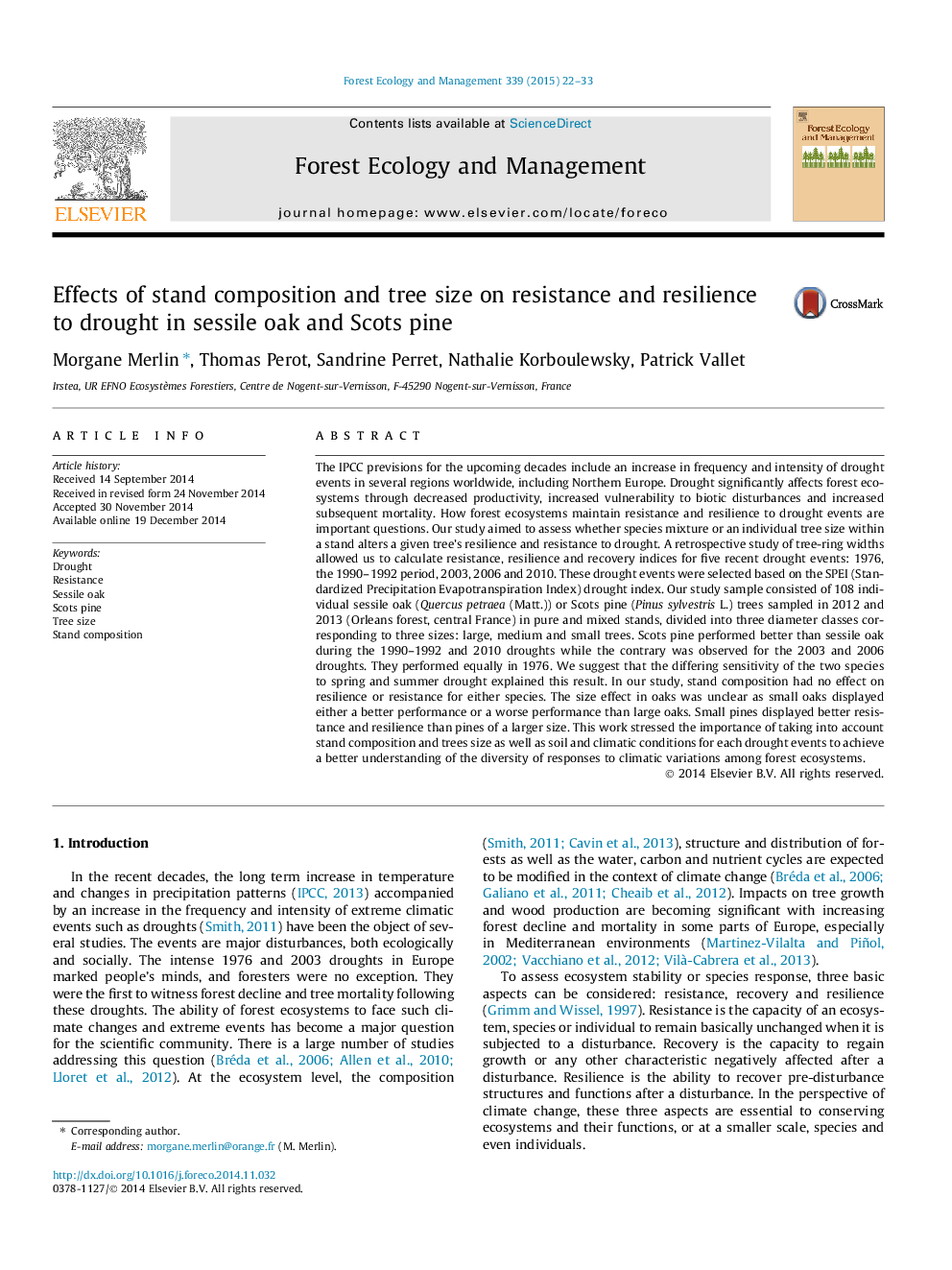| کد مقاله | کد نشریه | سال انتشار | مقاله انگلیسی | نسخه تمام متن |
|---|---|---|---|---|
| 86398 | 159184 | 2015 | 12 صفحه PDF | دانلود رایگان |
• We studied resistance and resilience to drought in Scots pine–sessile oak forest.
• Sessile oak was more affected by spring droughts.
• Scots pine was more affected by summer droughts.
• Stand composition did not affect species’ response to drought.
• Small pines performed better during droughts than large ones.
The IPCC previsions for the upcoming decades include an increase in frequency and intensity of drought events in several regions worldwide, including Northern Europe. Drought significantly affects forest ecosystems through decreased productivity, increased vulnerability to biotic disturbances and increased subsequent mortality. How forest ecosystems maintain resistance and resilience to drought events are important questions. Our study aimed to assess whether species mixture or an individual tree size within a stand alters a given tree’s resilience and resistance to drought. A retrospective study of tree-ring widths allowed us to calculate resistance, resilience and recovery indices for five recent drought events: 1976, the 1990–1992 period, 2003, 2006 and 2010. These drought events were selected based on the SPEI (Standardized Precipitation Evapotranspiration Index) drought index. Our study sample consisted of 108 individual sessile oak (Quercus petraea (Matt.)) or Scots pine (Pinus sylvestris L.) trees sampled in 2012 and 2013 (Orleans forest, central France) in pure and mixed stands, divided into three diameter classes corresponding to three sizes: large, medium and small trees. Scots pine performed better than sessile oak during the 1990–1992 and 2010 droughts while the contrary was observed for the 2003 and 2006 droughts. They performed equally in 1976. We suggest that the differing sensitivity of the two species to spring and summer drought explained this result. In our study, stand composition had no effect on resilience or resistance for either species. The size effect in oaks was unclear as small oaks displayed either a better performance or a worse performance than large oaks. Small pines displayed better resistance and resilience than pines of a larger size. This work stressed the importance of taking into account stand composition and trees size as well as soil and climatic conditions for each drought events to achieve a better understanding of the diversity of responses to climatic variations among forest ecosystems.
Journal: Forest Ecology and Management - Volume 339, 1 March 2015, Pages 22–33
